Hampton Court's Baroque era reinvention: The transformation of the threshold of power
Hampton Court's association with Henry VIII takes the focus away from its Baroque elements, but they're worthy of attention argues John Goodall. Photographs by Will Pryce for the Country Life Picture Library.
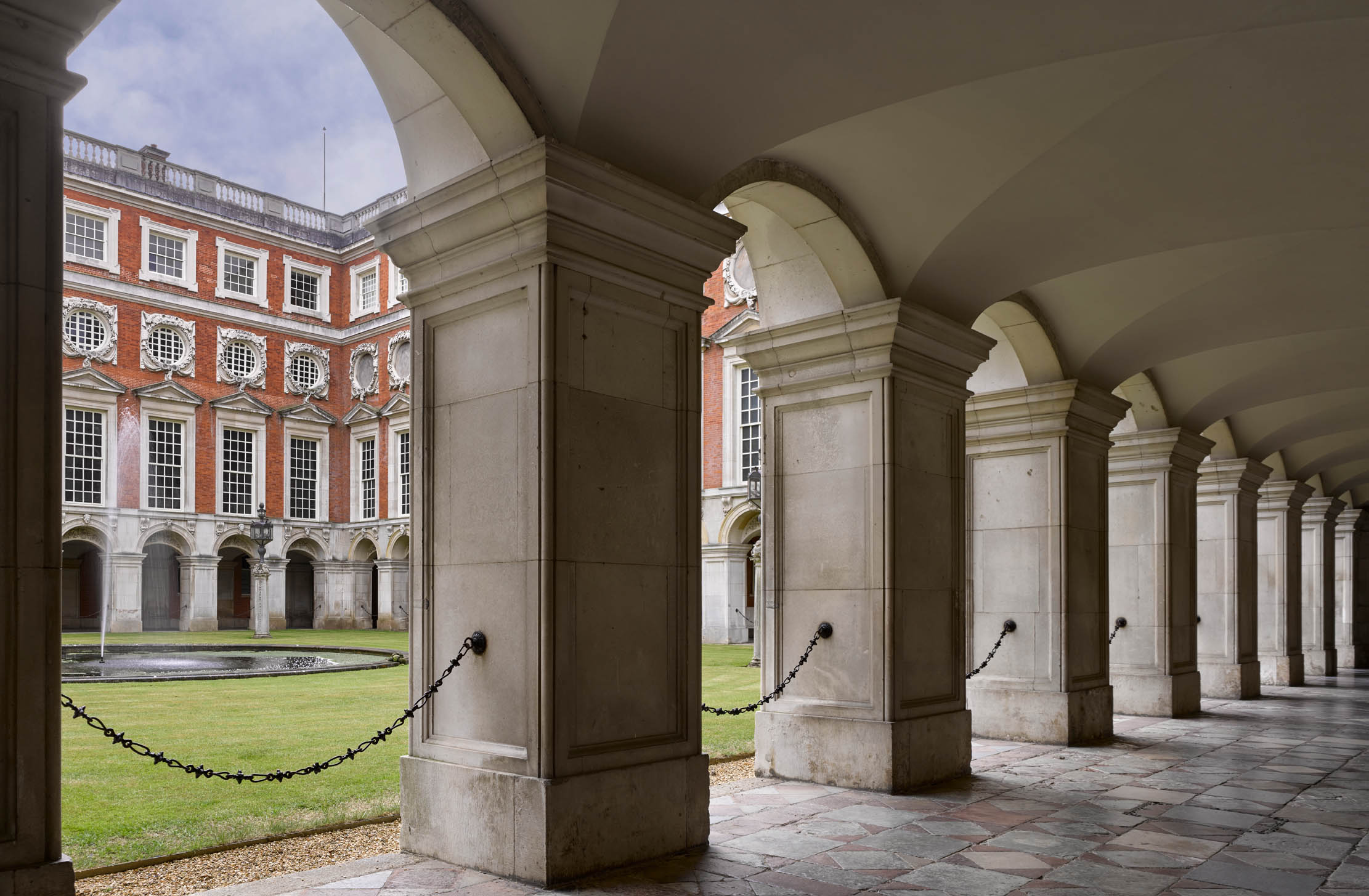

On February 13, 1689, in the culminating episode of the Glorious Revolution, William of Orange and his consort, Mary, formally accepted the offer of the English crown in the Banqueting House at Whitehall Palace in London. Among the conditions attached to this offer was the demand that they should rule jointly, although it was understood that William would enjoy complete executive authority. The arrangement bestowed some hereditary legitimacy on the succession, because Mary was the daughter of the deposed James II. In addition, William agreed that his sister-in-law, Anne, and her descendants would inherit the throne.
According to the Bishop Burnet, reminiscing in 1705, the new King was in poor health, having spent the preceding few weeks in St James’s Palace without exercising. Despite his triumph, he increasingly withdrew to his private closet and appeared peevish and ill-tempered in public. Friends warned him that he needed to be more open and accessible. The atmosphere of the capital, however, made smoggy by coal fires, aggravated his asthma and, within nine days, the royal couple left for Hampton Court. Here the King ‘found the air… agreed so well with him, that he resolved to live the greatest part of the year there’. Within a month, on March 12, the Court was ordered to remove there as well.
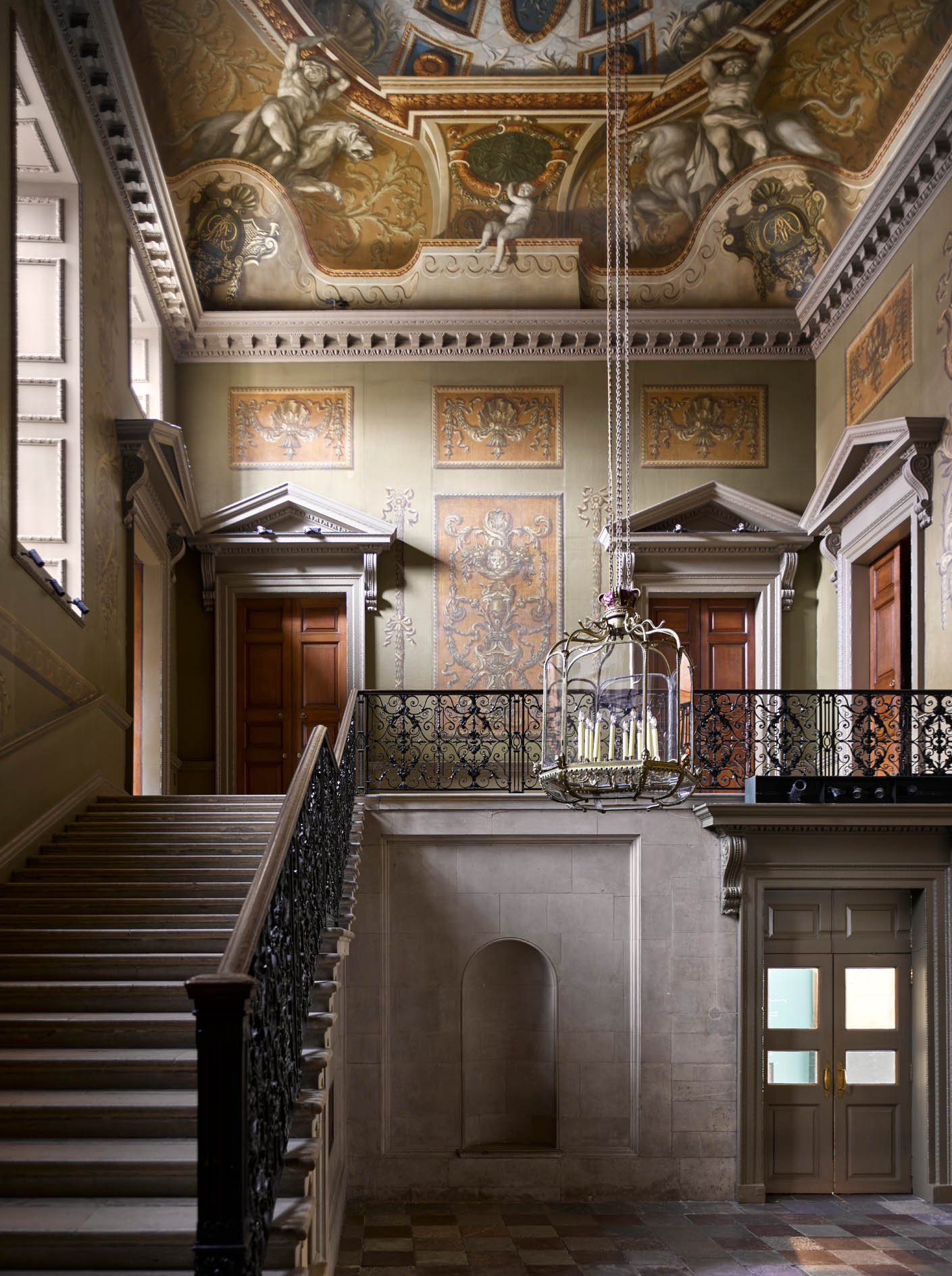
To his new subjects, the King’s departure to Hampton Court was as unwelcome as it was inconvenient. He continued to visit Whitehall for essential business, but otherwise ministers had to make a long journey (reputedly of about five hours) to see him. As a compromise, William III acquired the Earl of Nottingham’s house at Kensington. This henceforth became a weekday house close to the capital, where the air was still clean, but Hampton Court remained the King’s principal seat. Improvements to both buildings were an urgent necessity and responsibility for these — probably at the explicit request of Mary — passed to the Surveyor of the Royal Works, Sir Christopher Wren.
In physical terms, Hampton Court was much as Henry VIII had left it a century before. Some of its heirlooms were sold during the Commonwealth, but it escaped demolition and Oliver Cromwell had used it as a country retreat, travelling out from the capital every weekend by different routes with a strong guard to frustrate assassination attempts. Charles II had modernised the interior, but his energies were focused on Windsor and then Winchester. Visiting in 1689, Sir Christopher Hatton was ‘disgusted’ by the palace and thought the outside ‘very mean… I admire how anyone could fancy it’.
Plans for improvements were driven forward with extraordinary speed over March and April and an estimate of the costs was agreed on May 4 (a week before Mary and William also accepted the crown of Scotland). In this short period, three schemes were drawn up. In stylistic terms, they show the particular influence of alterations to the Louvre and Versailles devised by William’s Catholic arch-enemy, Louis XIV. Had money and time allowed, all the Tudor buildings, with the sole exception of Henry VIII’s great hall, might have been swept away. The scale of such an operation, however, not to mention the constraints imposed by the existing garden and the imperative to modernise the palace quickly, demanded a more pragmatic approach.
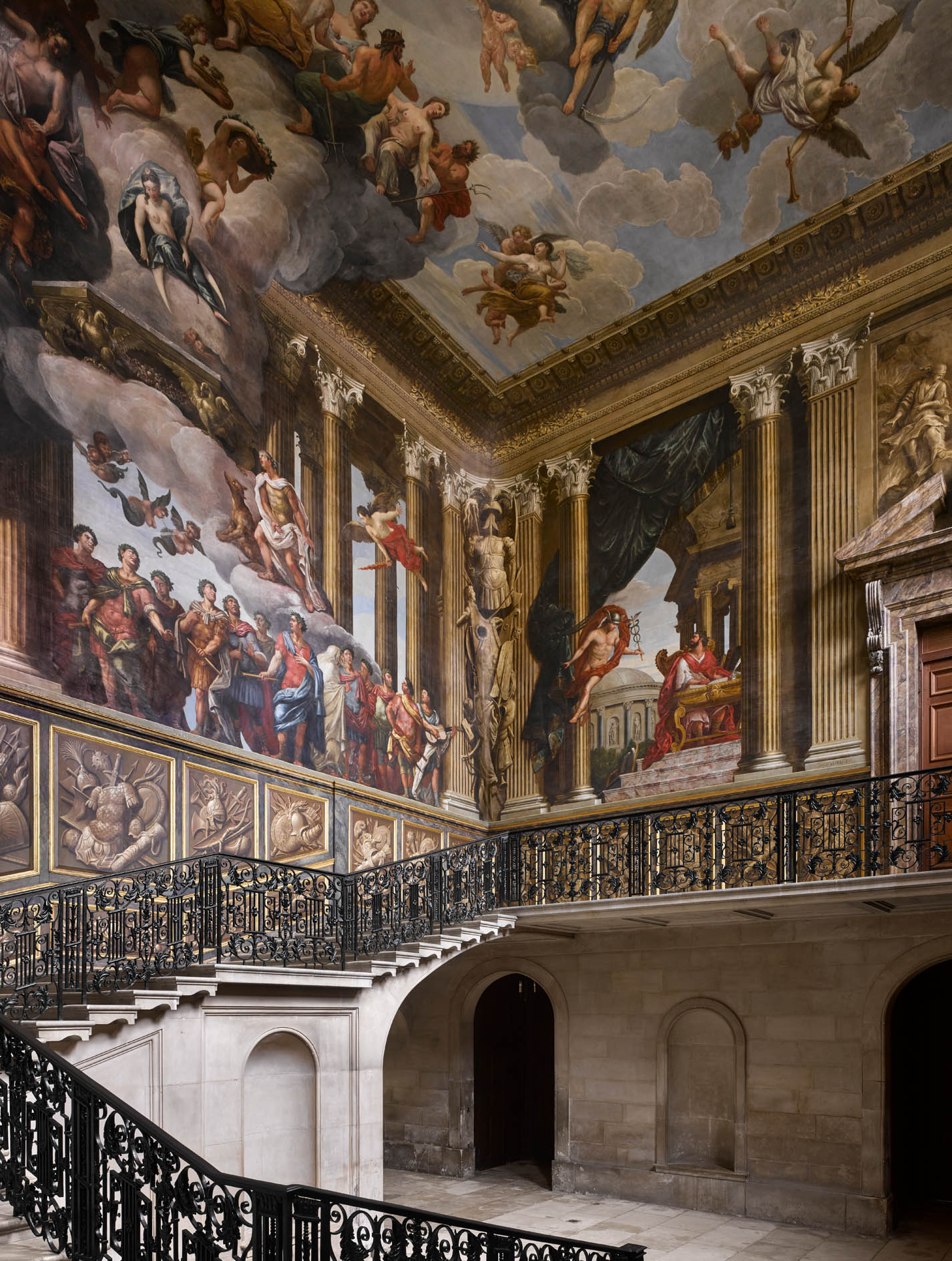
In the scheme finally adopted, Wren effectively overbuilt the existing withdrawing chambers of the palace with a new set of apartments for the King and Queen arranged around a courtyard. This left the option for further rebuilding in the future, but created an imposing new architectural composition with grand garden façades on two sides. Joining the new building to the old had one important consequence: to make the principal apartments of the two link together, Wren had to adopt the Tudor first-floor level.
Construction began in June and was pressed forward in great haste; too much haste, as it turned out. Over the winter at both Kensington and Hampton Court, there were serious collapses of new fabric. Wren was forced to defend his operations, but survived the investigation and work resumed. Henceforth, the King was absent for long periods on campaign and Mary assumed oversight of the building operation, as well as the government of the realm. The palace was far from complete, however, when she died from smallpox at Kensington on December 28, 1694.
Sign up for the Country Life Newsletter
Exquisite houses, the beauty of Nature, and how to get the most from your life, straight to your inbox.
William was devastated by his bereavement and work to Hampton Court halted for three years. When Celia Fiennes visited in 1697, she saw ‘just the shell up and some of the Roomes of State Ceil’d but nothing finished’. The same year, the Treaty of Ryswick brought peace to Europe and William refocused his attention on the project. With the death of the Queen, Wren lost control of the project. William Talman, who had testified against Wren after the collapse of 1689, became involved in the design of garden buildings at the palace and eventually took control of the interiors as well.
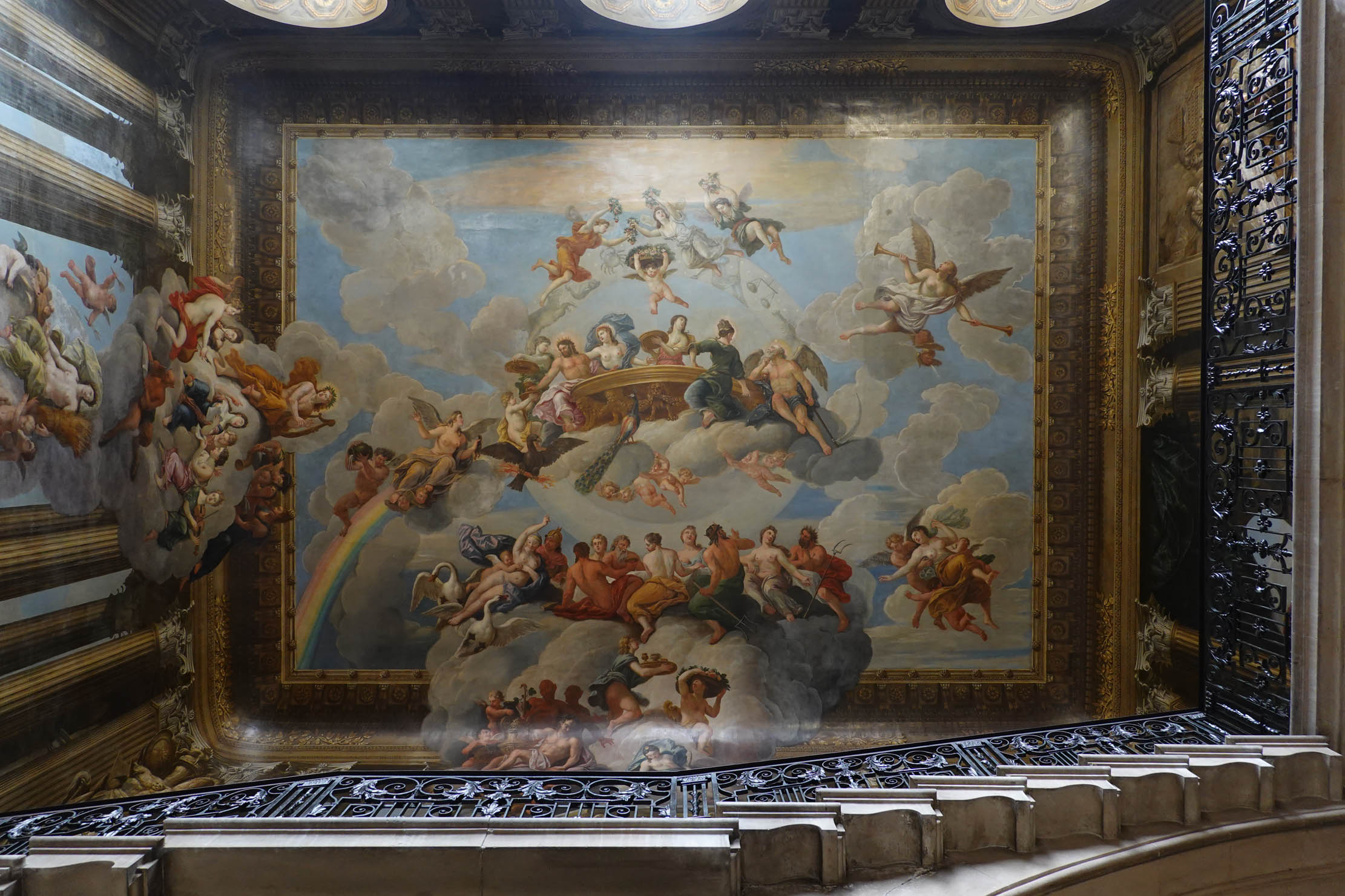
On September 12, 1699, Talman wrote to the King to report that the south front and King’s Stairs were complete. Eager to occupy his new palace — and having lost Whitehall to a catastrophic fire in 1698 — William moved into his apartment at the end of October. The Court followed in April 1700, although work to the decoration of the interior continued.
One room that was fully prepared that spring, however, was the King’s Guard Chamber, the first room of the royal apartment. It was here that the Yeomen of Guard slept and determined who would have the privilege of access to the rooms beyond and William III commissioned his gunsmith, John Harris of Eton, to dress the room with weapons. Such displays had been pioneered in England by Prince Rupert in his lodgings at Windsor Castle in the late 1660s. Thereafter, Charles II had decorated the Guard Chamber at Windsor in this style and James II that at Whitehall.
Harris was probably involved in all these schemes, which are lost, as is his spectacular decoration of the Small Armory at the Tower of London commissioned in 1696. This included an ‘organ’ 10 ranges high with pipes made of blunderbusses and 2,000 pairs of pistols. Harris’s display at Hampton Court miraculously still survives, although it has been much restored over time and substantially comprises later weapons.
In the summer of 1701, the Neapolitan-born painter Antonio Verrio was invited to Hampton Court. He must immediately have begun developing ideas for the King’s Stair, the single largest space in the new building. The lower register of the interior was painted with weapons by Peter Cousin, but Verrio’s treatment of the upper section gives the illusion of a scene expanding beyond the confines of the room.

The subject matter is taken from the Satire of the Caesars by the Emperor Julian the Apostate, written in ad361. Verrio shows the banqueting gods on the ceiling and long wall judging who is worthy to join them. They decide that all the achievements of the Caesars, advocated by Romulus, are eclipsed by those of Alexander the Great, presented by Hercules.
This story figures in contemporary Protestant polemic, which characterised the Emperor Julian — also depicted in the act of writing — as a reformer reacting against the corruption of the church. Here, therefore, he is a proto-Protestant, as Alexander is to be read as William III, a leader without rival. Hercules, his advocate, otherwise appears in imagery all over the palace and its gardens. Verrio was still at work on this huge painting when William III was injured falling from his horse and died a short time later on March 8, 1702.
On her visits to Hampton Court during her 12-year reign, his successor, Queen Anne, both before and after being widowed, occupied the King’s Apartment that was completed by William III. The corresponding Queen’s Apartment was only furnished and finished following the Hanoverian succession.
Having visited Hampton Court in 1714, George I decided that the Queen’s Apartment would be a suitable residence for his son and daughter-in-law. It was, accordingly, fitted up for their use. In 1716, however, the already poor relationship between the King and the Prince of Wales deteriorated and the latter began to foment political opposition. At Hampton Court, the Prince began to assume a more formal and demonstrative lifestyle, including dining regularly in public with onlookers watching from behind barriers.
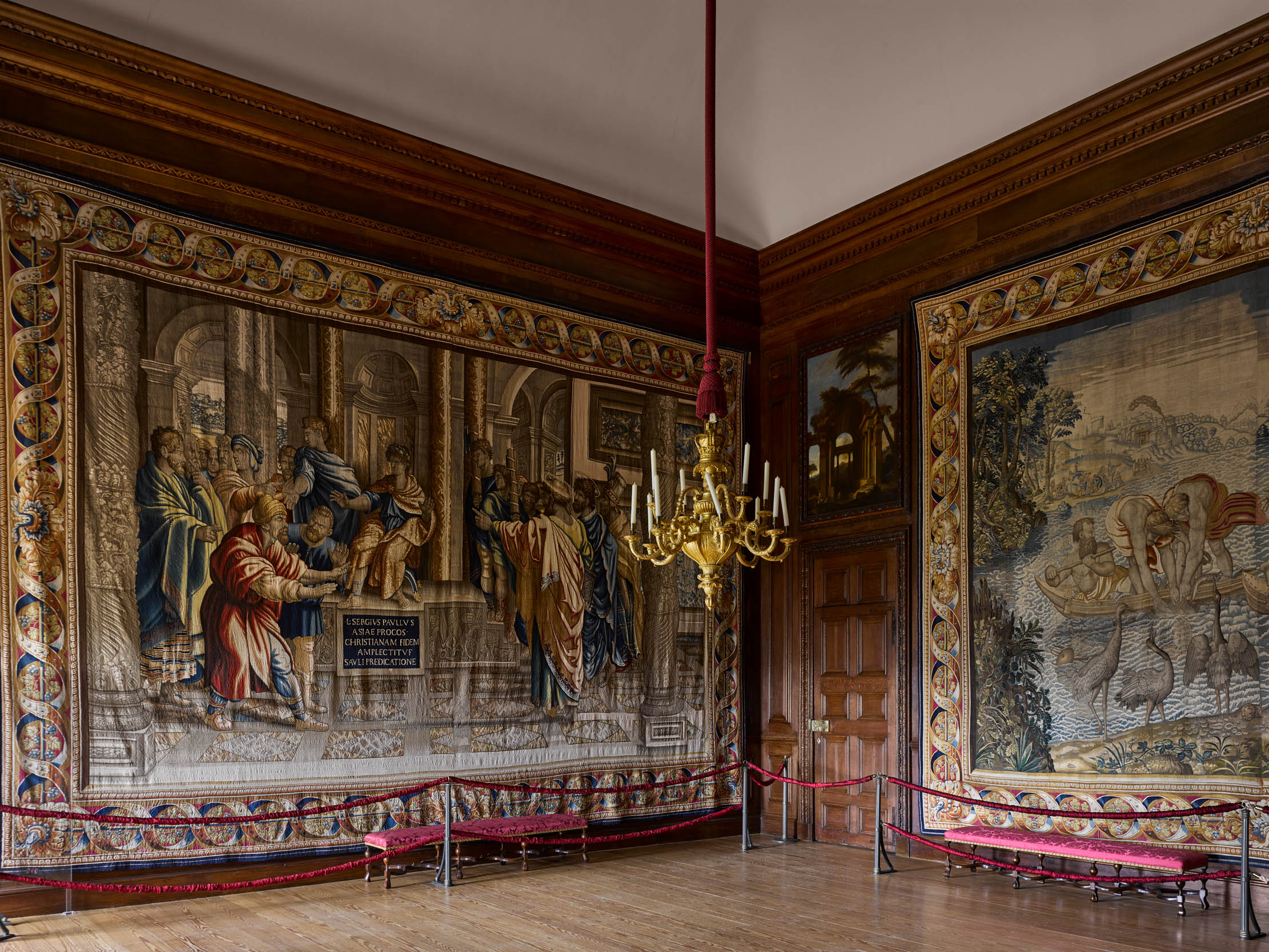
To accommodate this, in 1717, the Comptroller of the Office of Works, John Vanbrugh furnished the Guard Chamber and the Presence Chamber of the Prince’s apartment. In all their details, these rooms speak of Vanbrugh’s extraordinary invention. Particularly notable is a monumental fireplace in the former ornamented with huge figures of the Yeomen of the Guard. One figure grimaces at those who enter the room and the other smiles after those fortunate enough to progress beyond it.
Vanbrugh also drew up plans for George I to remodel the entrance court of the palace around Henry VIII’s great hall in 1717. The following year, however, he was among the victims of a coup by the architect and engineer William Benson to seize control of the Royal Works from Wren. Benson commissioned Sir James Thornhill to devise a scheme of painted decoration for the Queen’s Stair, which at this time remained austerely decorated.

Benson, in turn, fell from office and the final round of alterations to Hampton Court as a working palace were undertaken, after the accession of George II and Queen Caroline, by William Kent, who was emerging as an outstanding and fashionable designer.
His first important project was work to the Clock Court, including a new apartment for the Duke of Cumberland, which Kent devised in an unexpected combination of the Tudor and Palladian styles appropriate to this hybrid palace. It was also Kent who executed the present decoration of the Queen’s Stair, a commission that followed directly on from his work to restore Rubens’s ceiling in the Banqueting Hall at Whitehall, which had clearly impressed the King and Queen. It is very simple and architectural with a fictive dome. Its commanding feature is a magnificent painting The Presentation to Jupiter and Juno of the Liberal Science by Apollo by Gerard van Honthorst, which was moved here from Whitehall in 1733.
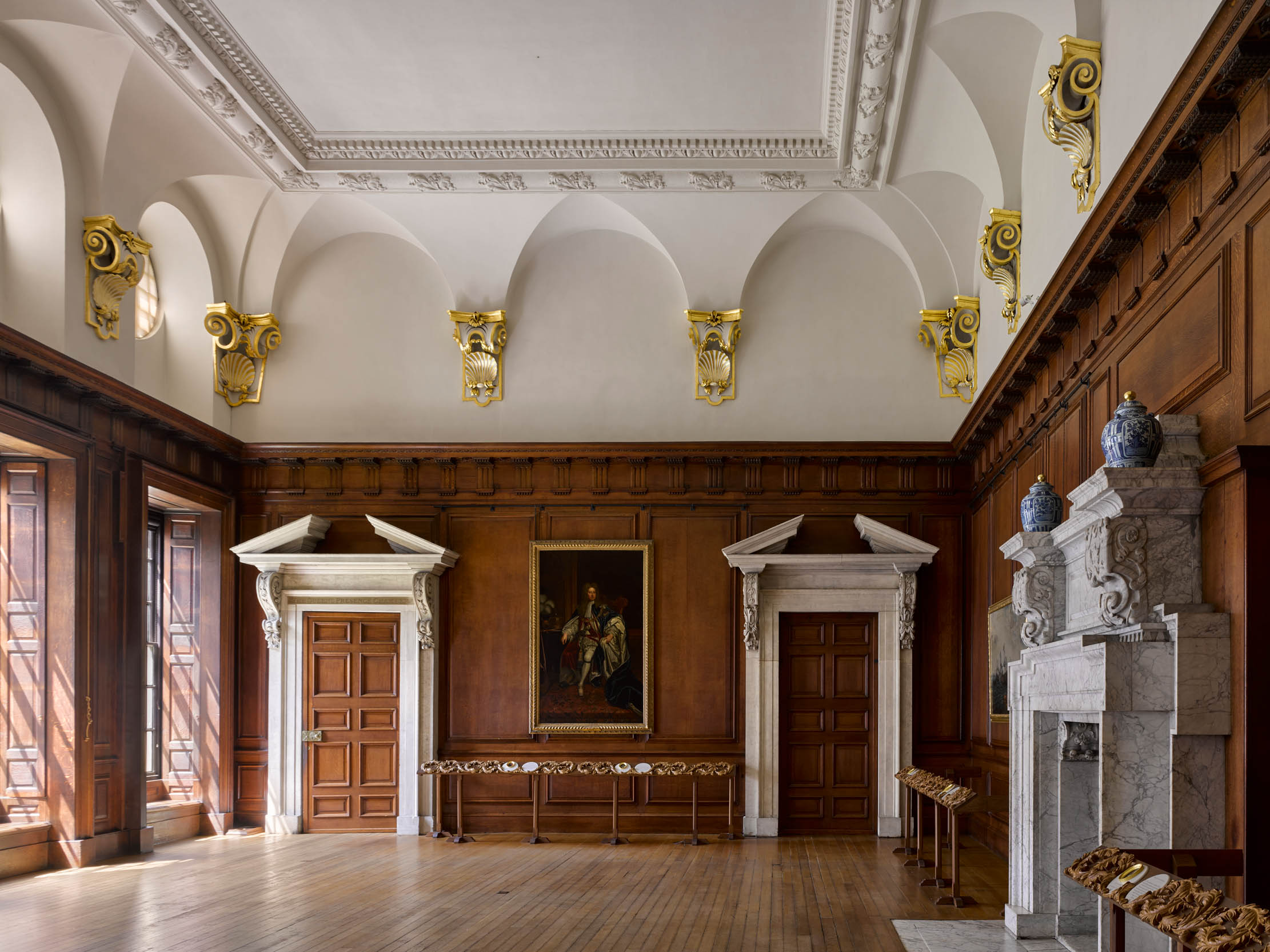
When George III ascended to the throne in 1760, he showed little affection for Hampton Court. According to one of his sons, the Duke of Sussex, he once had an altercation with his father here and was struck by him. ‘The blow,’ he explained ‘so disgusted him that he could never afterwards be induced to think of it as a residence.’ Despite its fall from royal favour, Hampton Court had already become a tourist attraction and has remained so ever since.
In a popular sense, the palace is chiefly thought of as a great Tudor building; as we saw last week, the association with Henry VIII has consistently underpinned its celebrity. The Baroque apartments do not, perhaps, attract the same degree of attention, although the fire of 1986 and the subsequent restoration work, not to mention the re-creation of the associated Privy Garden, has raised awareness of them.
It is one mark of their extraordinary richness and interest, however, that this article has merely carried the reader to the King’s and Queen’s Guard Chambers, the threshold of power. To follow in the footsteps of the most favoured courtiers into the royal presence beyond, the reader must visit for themselves.
For further information and opening hours for Hampton Court, visit www.hrp.org.uk

John spent his childhood in Kenya, Germany, India and Yorkshire before joining Country Life in 2007, via the University of Durham. Known for his irrepressible love of castles and the Frozen soundtrack, and a laugh that lights up the lives of those around him, John also moonlights as a walking encyclopedia and is the author of several books.
-
 'Monolithic, multi-layered and quite, quite magnificent. This was love at first bite': Tom Parker Bowles on his lifelong love affair with lasagne
'Monolithic, multi-layered and quite, quite magnificent. This was love at first bite': Tom Parker Bowles on his lifelong love affair with lasagneAn upwardly mobile spaghetti Bolognese, lasagne al forno, with oozing béchamel and layered meaty magnificence, is a bona fide comfort classic, declares Tom Parker Bowles.
By Tom Parker Bowles
-
 Country houses, cream teas and Baywatch: Country Life Quiz of the Day, April 24, 2025
Country houses, cream teas and Baywatch: Country Life Quiz of the Day, April 24, 2025Thursday's Quiz of the Day asks exactly how popular Baywatch became.
By Toby Keel